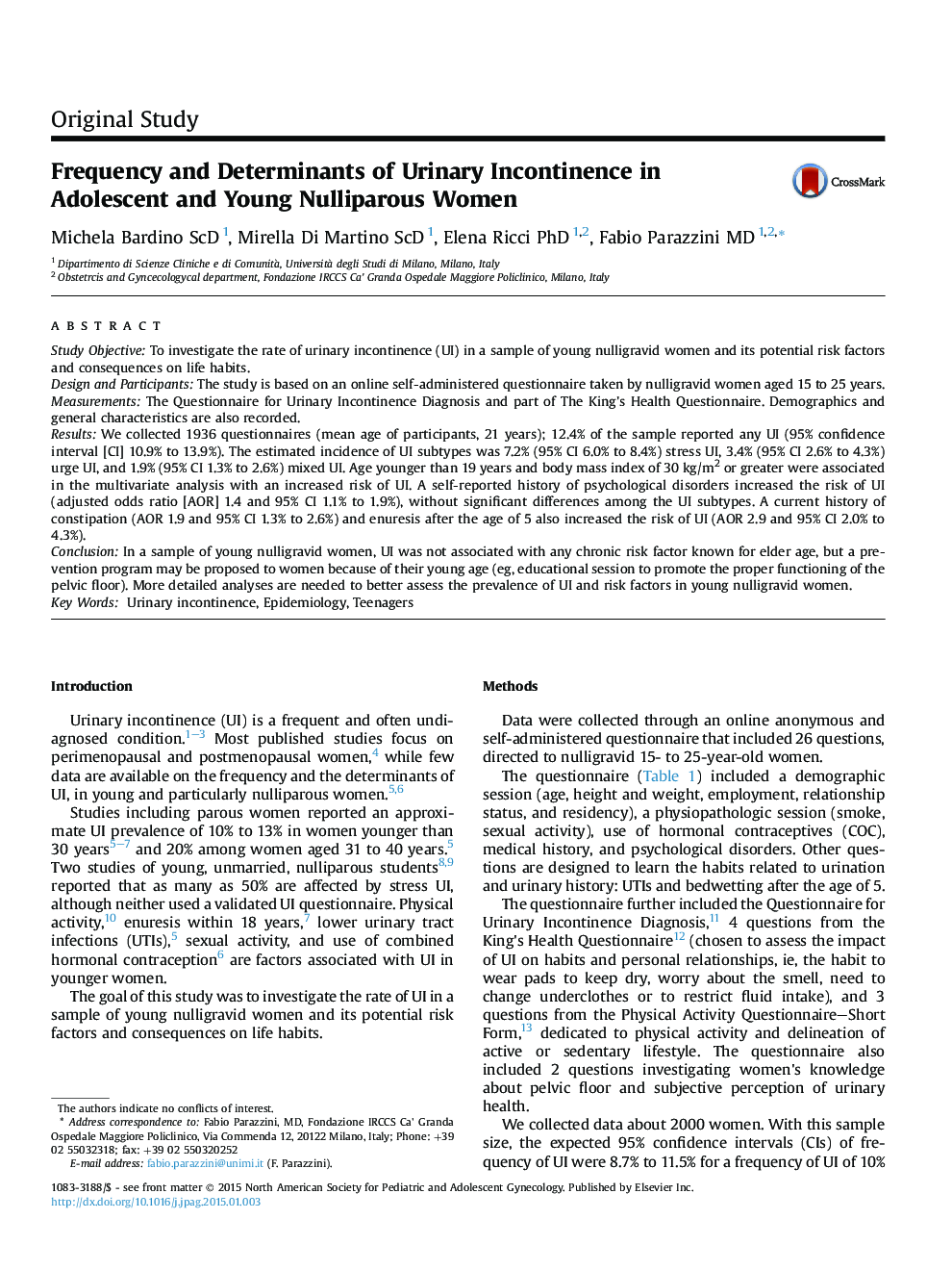| Article ID | Journal | Published Year | Pages | File Type |
|---|---|---|---|---|
| 3962728 | Journal of Pediatric and Adolescent Gynecology | 2015 | 9 Pages |
Study ObjectiveTo investigate the rate of urinary incontinence (UI) in a sample of young nulligravid women and its potential risk factors and consequences on life habits.Design and ParticipantsThe study is based on an online self-administered questionnaire taken by nulligravid women aged 15 to 25 years.MeasurementsThe Questionnaire for Urinary Incontinence Diagnosis and part of The King's Health Questionnaire. Demographics and general characteristics are also recorded.ResultsWe collected 1936 questionnaires (mean age of participants, 21 years); 12.4% of the sample reported any UI (95% confidence interval [CI] 10.9% to 13.9%). The estimated incidence of UI subtypes was 7.2% (95% CI 6.0% to 8.4%) stress UI, 3.4% (95% CI 2.6% to 4.3%) urge UI, and 1.9% (95% CI 1.3% to 2.6%) mixed UI. Age younger than 19 years and body mass index of 30 kg/m2 or greater were associated in the multivariate analysis with an increased risk of UI. A self-reported history of psychological disorders increased the risk of UI (adjusted odds ratio [AOR] 1.4 and 95% CI 1.1% to 1.9%), without significant differences among the UI subtypes. A current history of constipation (AOR 1.9 and 95% CI 1.3% to 2.6%) and enuresis after the age of 5 also increased the risk of UI (AOR 2.9 and 95% CI 2.0% to 4.3%).ConclusionIn a sample of young nulligravid women, UI was not associated with any chronic risk factor known for elder age, but a prevention program may be proposed to women because of their young age (eg, educational session to promote the proper functioning of the pelvic floor). More detailed analyses are needed to better assess the prevalence of UI and risk factors in young nulligravid women.
